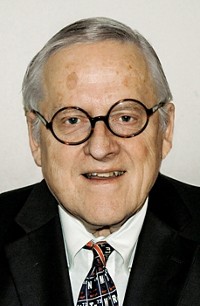Advertisement
Grab your lab coat. Let's get started
Welcome!
Welcome!
Create an account below to get 6 C&EN articles per month, receive newsletters and more - all free.
It seems this is your first time logging in online. Please enter the following information to continue.
As an ACS member you automatically get access to this site. All we need is few more details to create your reading experience.
Not you? Sign in with a different account.
Not you? Sign in with a different account.
ERROR 1
ERROR 1
ERROR 2
ERROR 2
ERROR 2
ERROR 2
ERROR 2
Password and Confirm password must match.
If you have an ACS member number, please enter it here so we can link this account to your membership. (optional)
ERROR 2
ACS values your privacy. By submitting your information, you are gaining access to C&EN and subscribing to our weekly newsletter. We use the information you provide to make your reading experience better, and we will never sell your data to third party members.
Physical Chemistry
Glenn T. Seaborg Award For Nuclear Chemistry
Recipients are honored for contributions of major significance to chemistry
by Mitch Jacoby
February 2, 2009
| A version of this story appeared in
Volume 87, Issue 5
Sponsored by the ACS Division of Nuclear Chemistry & Technology
For chemists who work in heavy-element synthesis, discovering a new element can be the highlight of a scientific career. Kenton J. Moody, a staff chemist at Lawrence Livermore National Laboratory, enjoys the distinction of having discovered not one, but five new elements.
As a founding member of the collaboration between the heavy-element research groups at Livermore and the Flerov Laboratory of Nuclear Reactions, in Dubna, Russia, Moody served as a senior member of the teams that discovered elements 113, 114, 115, 116, and 118. Those seminal investigations also led to the first observations of more than 30 isotopes of various heavy elements.
"There are very few people who can claim to have participated in the discovery of even one new chemical element," says Dawn A. Shaughnessy, a staff chemist at Livermore. "Playing an active role in the discovery of five new elements is a remarkable accomplishment."
Shaughnessy points out that Moody was a graduate student with the late chemistry Nobel Laureate Glenn T. Seaborg and that, like his mentor, Moody dedicated his career to nuclear chemistry. In particular, Moody helped collect a growing body of experimental evidence for the existence of the "island of stability," a region on the chart of nuclides in which certain superheavy nuclei are predicted to be especially stable. Verifying the island's existence was critically important to Seaborg.
Moody's contributions to the field are memorialized on new periodic tables and will be recognized in textbooks used by future chemistry students, Shaughnessy says. All of those accomplishments, she comments, make Moody's receipt of the Seaborg Award "most appropriate."
Moody, 54, has focused on research in nuclear chemistry since the 1970s. He has investigated a wide range of topics in nuclear and radiochemistry, including heavy-element synthesis and detection, characterization of actinide and transactinide elements, and measurement of nuclear reaction cross sections (probabilities). He has also developed methods for chemical separations and analysis of most of the elements in the periodic table.
Among Moody's more recent contributions to nuclear science is his creation of the new discipline of nuclear forensics, for which he is coauthor of the field's definitive textbook. To help set this new area of science on solid ground, Moody developed the methodology needed to deduce the history of samples of nuclear materials. This technique is now routinely used by the Department of Homeland Security and law-enforcement agencies to identify illicit nuclear materials.
Moody graduated in 1977 with a bachelor's degree in chemistry from the University of California, Santa Barbara, and received a Ph.D. in nuclear chemistry from UC Berkeley in 1983. After conducting postdoctoral research in the Nuclear Science Division of Lawrence Berkeley National Laboratory, Moody moved to Germany, where he was appointed staff scientist at the Institute for Heavy Ion Research, in Darmstadt. In 1985, he returned to the U.S. to begin a position as a nuclear chemist at Livermore and has continued to conduct research there for nearly 25 years.
Moody has published more than 100 papers in scientific journals and has mentored numerous summer research interns and graduate students. He has also served as an instructor for the ACS summer school in nuclear chemistry, lecturing on heavy-element science, fundamentals of radiochemistry, and nuclear forensics. Moody's commitment to nuclear science education has recently led to his appointment as adjunct professor in the newly formed radiochemistry program at the University of Nevada, Las Vegas.
Moody will present the award address before the Division of Nuclear Chemistry & Technology.





Join the conversation
Contact the reporter
Submit a Letter to the Editor for publication
Engage with us on Twitter